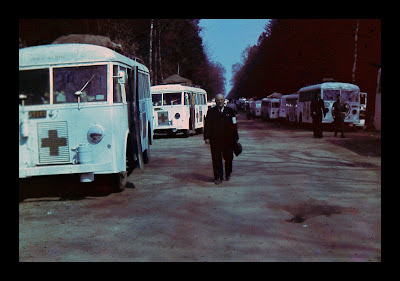 |
| Gustaf Ekström sittande första från höger. |
Pratade idag med min kolega från båtbryggan, Matti Palm. Jag undrade om han hade undersökt vilka nazister som fick fly till Sverige med hjälp av Vita bussar. Ett namn jag kände till var Gustaf Ekström som var under krigsplacerad på SS-Hauptamt. Rottenführer Gustaf Ekström arbetade med propaganda mot ockuperade länder och värvade nya frivilliga till SS.
Gustaf Ekströms chef, SS-Obergruppenführer Gottlob Berger dömdes under Nürnbergrättegångarna som krigsförbrytare. Gustaf Ekström var mellan åren 1933 och 35 förbundssekreterare i Nordisk ungdom, det svenska nazistpartiets ungdomsavdelning.
1 599 namn saknas av "Tysk-svenskar" som fick lift till Sverige med de Vita Bussarna. Ofta var den nog flykt undan rättvisan.

.png)




























